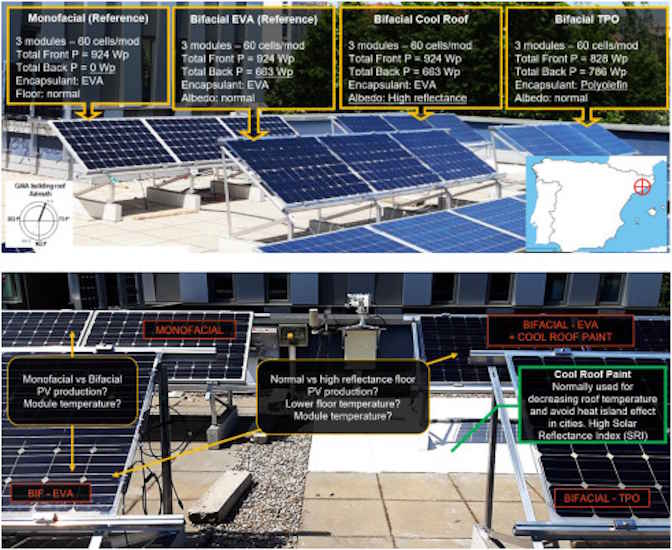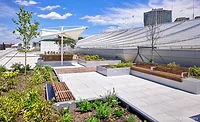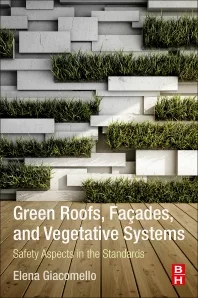Solar Roofing
Study Shows Cool Roofs Can Help Increase Power Yields in PV Solar Panels
Cool roof coatings can benefit certain solar systems in addition to cooling buildings

A 3D model for the bifacial solar roof study used to simulate shadows, rendered in SketchUp®. Images courtesy of sciencedirect.com.
A study conducted by Spanish and Algerian researchers concluded that cool roof coatings can improve the performance of bifacial photovoltaic solar systems on roofs.
Published in the December 2023 edition of Journal of Building Engineering, the study is one of the few to look at the effects reflective roofing surfaces have on solar panels that create electricity from solar radiation hitting both sides of their surfaces, or “bifacial” panels.
Transparent covers on the back of bifacial modules allow the panels to generate electricity from radiation received on the rear side of the panel, as opposed to monofacial panels that only generate electricity from solar radiation on the front side of the panel.
As the scientists behind the study explain, cool roofs are roofs that use reflective coatings “with a high emissivity in the thermal infrared,” which have been shown to lower a building’s temperature and significantly reduce the energy needed to cool buildings. They also help reduce the “heat island” effect in urban environments.
“From an economic perspective, the benefits of [cool roofs] have been shown to lead to significant savings,” the study says.
The scientists note that studies of bifacial systems on roofs combined with highly-reflective surfaces are “very limited,” even if it’s apparent that these types of solar panels could benefit from reflective surfaces like cool roofs.
For this study, researchers used three photovoltaic systems consisting of bifacial modules connected in a series on the terrace of the GAIA Building in Barcelona. One system was above a “normal floor,” the second was above a cool roof-coated floor, and the third was above a normal floor with other types of photovoltaic modules. A fourth system, a monofacial array, was included for reference.

Four different solar arrays were used in the study to determine if cool roof coatings improve power yields in bifacial panels.
Testing took place from April 2020 to November 2021. According to the study, the bifacial modules installed above the cool roof had an 8.6% higher yield compared to monofacial panels.
“Moreover, the [cool roof] coating can help reduce floor temperatures in unshaded areas during summer (−3.8 degrees Celsius [28.6 degrees Fahrenheit]), potentially leading to significant energy savings in cooling the building,” the study says. “The use of cool roof coating holds particular appeal for PV systems with large row spacing, where a substantial portion of the floor is exposed to sunlight.”
The study concludes that cool roof coatings can be applied to existing bifacial rooftop installations or incorporated into new installations to increase the efficiency of buildings and their solar arrays.
“It is an already available market product with reasonable costs that offers dual advantages: increased energy yield and reduced building cooling consumption, both yielding economic benefits,” the study states.
Looking for a reprint of this article?
From high-res PDFs to custom plaques, order your copy today!








